|
 With grain in the bin and improvement in the markets, there is
much tax planning and financial projections being considered.
These plans may include FSA marketing assistance loans, farm
storage facility loans, or FSA direct or guaranteed loan
financing. With grain in the bin and improvement in the markets, there is
much tax planning and financial projections being considered.
These plans may include FSA marketing assistance loans, farm
storage facility loans, or FSA direct or guaranteed loan
financing.
Please contact your local County Office early in the process if
you are contemplating any of these options. Although we still
have restrictions in place, we strive to provide the best
service possible to Illinois farm families.
All of us at the Illinois Farm Service Agency wish you a happy
and safe Thanksgiving holiday and time enjoyed with your
families.
John Gehrke
Acting State Executive Director
FSA Encourages Farmers and Ranchers to Vote
in County Committee Elections
The 2021 Farm Service Agency County Committee
Elections will begin on November 1, 2021, when ballots are
mailed to eligible voters. The deadline to return ballots to
local FSA offices, or to be postmarked, is December 6, 2021.

County committee members are an important component of the
operations of FSA and provide a link between the agricultural
community and USDA. Farmers and ranchers elected to county
committees help deliver FSA programs at the local level,
applying their knowledge and judgment to make decisions on
commodity price support programs; conservation programs;
incentive indemnity and disaster programs for some commodities;
emergency programs and eligibility. FSA committees operate
within official regulations designed to carry out federal laws.
To be an eligible voter, farmers and ranchers must participate
or cooperate in an FSA program. A person who is not of legal
voting age but supervises and conducts the farming operations of
an entire farm, may also be eligible to vote. A cooperating
producer is someone who has provided information about their
farming or ranching operation(s) but may not have applied or
received FSA program benefits.
Eligible voters in the local administrative area holding a 2021
election who do not receive a ballot can obtain one from their
local USDA Service Center.
Newly elected committee members will take office January 1,
2022.
More information on county committees, such as the new 2021 fact
sheet, can be found on the FSA website at fsa.usda.gov/elections
or at a local USDA Service Center.
RMA Makes Improvements to Whole-Farm Revenue
Protection (WFRP)
Organic and aquaculture producers can soon
benefit from updates to the USDA Whole-Farm Revenue Protection (WFRP)
plan. USDA’s Risk Management Agency (RMA) is revising the plan
of insurance to make it more flexible and accessible to
producers beginning in crop year 2022.
Changes to WFRP include:
Increasing expansion limits for organic producers to the higher
of $500,000 or 35 percent. Previously, small and medium size
organic operations were held to the same 35 percent limit to
expansion as conventional practice producers.

Increasing the limit of insurance for aquaculture producers to
$8.5 million. Previously aquaculture producers were held to a $2
million cap on expected revenue, this change allows more
aquaculture producers to participate in the program.
Allowing a producer to report acreage as certified organic, or
as acreage in transition to organic, when the producer has
requested an organic certification by the acreage reporting
date. This allows organic producers more flexibility when
reporting certified acreage.
Providing flexibility to report a partial yield history for
producers lacking records by inserting zero yields for missing
years. Previously, missing a year of records would cause the
commodity’s expected value to be zero, meaning past revenue from
the commodity would contribute nothing to the insurance
guarantee.
WFRP provides a risk management safety net for all commodities
on the farm under one insurance policy and is available in all
counties nationwide. This insurance plan is tailored for any
farm with up to $8.5 million in insured revenue, including farms
with specialty or organic commodities (both crops and
livestock), or those marketing to local, regional, farm-identity
preserved, specialty, or direct markets.
Crop insurance is sold and delivered solely through private crop
insurance agents. A list of crop insurance agents is available
at all USDA Service Centers and online at the RMA Agent Locator.
Learn more about crop insurance and the modern farm safety net
at rma.usda.gov.
Making Farm Reconstitutions
When changes in farm ownership or operation
take place, a farm reconstitution is necessary. The
reconstitution — or recon — is the process of combining or
dividing farms or tracts of land based on the farming operation.
To be effective for the current Fiscal Year (FY), farm
combinations and farm divisions must be requested by August 1 of
the FY for farms subject to the Agriculture Risk Coverage (ARC)
and Price Loss Coverage (PLC) program. A reconstitution is
considered to be requested when all of the required signatures
are on FSA-155 and all other applicable documentation, such as
proof of ownership, is submitted.
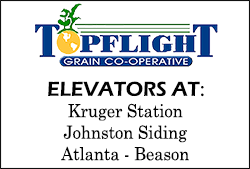
Total Conservation Reserve Program (CRP) and non-ARC/PLC farms
may be reconstituted at any time.
The following are the different methods used when doing a farm
recon:
Estate Method — the division of bases, allotments and
quotas for a parent farm among heirs in settling an estate
Designation of Landowner Method — may be used when (1)
part of a farm is sold or ownership is transferred; (2) an
entire farm is sold to two or more persons; (3) farm ownership
is transferred to two or more persons; (4) part of a tract is
sold or ownership is transferred; (5) a tract is sold to two or
more persons; or (6) tract ownership is transferred to two or
more persons. In order to use this method, the land sold must
have been owned for at least three years, or a waiver granted,
and the buyer and seller must sign a Memorandum of Understanding
DCP Cropland Method — the division of bases in the same
proportion that the DCP cropland for each resulting tract
relates to the DCP cropland on the parent tract
Default Method — the division of bases for a parent farm
with each tract maintaining the bases attributed to the tract
level when the reconstitution is initiated in the system.
For questions on your farm reconstitution, contact your local
USDA Service Center. To find a local service, click this link.
Sign up for Wetland Reserve Easements for
2022
USDA's Natural Resources Conservation Service (NRCS)
announced the application period for the Fiscal Year (FY) 2022
Agricultural Conservation Easement Program - Wetland Reserve
Easements. (ACEP-WRE). The purpose of the Wetland Reserve
Easements (WRE) program is to help landowners enhance and
protect habitat for wetland wildlife on their lands, reduce
impacts from flooding, recharge groundwater, provide outdoor
recreation, and increase habitat for migratory waterfowl.
NRCS wants landowners and farmers to know that the first
application cut-off date for fiscal year 2022 has been
established. NRCS accepts applications for Wetland Reserve
Easements (WRE) year round. Applications NRCS receives that meet
program eligibility by December 10, 2021 will be considered for
funding in our 2022 program.
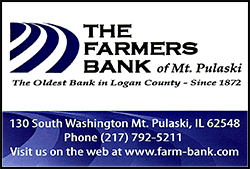
Land eligible for WRE includes farmed or converted wetlands that
have been previously altered for agricultural production that
can be successfully and cost-effectively restored. NRCS
prioritizes applications based on the easement’s potential for
improving water quality and protecting and enhancing habitat for
migratory birds and other wildlife. To enroll land through this
program, NRCS enters into purchase agreements with eligible
private landowners and then they work together to develop and
implement a wetland reserve plan to guide the restoration
easement process. This plan restores, enhances, and protects the
wetland’s functions and values.
Applications for ACEP-WRE are continuous and can be submitted at
any time. For FY 2022, Illinois NRCS has received $3.8 million
in funding and will make funding decisions for eligible
applicant interested in ACEP-WRE.
NRCS provides technical and financial assistance directly to
private landowners to restore, protect and enhance wetlands
through the purchase of these easements, and eligible landowners
can choose to enroll in either a permanent easement or a 30-year
easement. To apply for a wetland easement through ACEP - WRE,
visit NRCS at your local USDA Service Center. Due to COVID-19
restrictions, producers should call to set up appointments with
their local NRCS office staff. Visit www.nrcs.usda.gov to learn
more.
Find more information about ACEP and other NRCS conservation
programs in Illinois online at
https://www.nrcs.usda.
gov/wps/portal/nrcs/il/programs/.
Farm Storage Facility Loans
FSA’s Farm Storage Facility Loan (FSFL) program
provides low-interest financing to producers to build or upgrade
storage facilities and to purchase portable (new or used)
structures, equipment and storage and handling trucks.
The low-interest funds can be used to build or upgrade permanent
facilities to store commodities. Eligible commodities include
corn, grain sorghum, rice, soybeans, oats, peanuts, wheat,
barley, minor oilseeds harvested as whole grain, pulse crops
(lentils, chickpeas and dry peas), hay, honey, renewable
biomass, fruits, nuts and vegetables for cold storage
facilities, floriculture, hops, maple sap, rye, milk, cheese,
butter, yogurt, meat and poultry (unprocessed), eggs, and
aquaculture (excluding systems that maintain live animals
through uptake and discharge of water). Qualified facilities
include grain bins, hay barns and cold storage facilities for
eligible commodities.
Loans up to $50,000 can be secured by a promissory note/security
agreement and loans between $50,000 and $100,000 may require
additional security. Loans exceeding $100,000 require additional
security.

Producers do not need to demonstrate the lack of commercial
credit availability to apply. The loans are designed to assist a
diverse range of farming operations, including small and
mid-sized businesses, new farmers, operations supplying local
food and farmers markets, non-traditional farm products, and
underserved producers.
To learn more about the FSA Farm Storage Facility Loan, visit
www.fsa.usda.gov/pricesupport or contact your local FSA county
office. To find your local FSA county office, visit
http://offices.usda.gov.
Preauthorized Debit Available for Farm Loan
Borrowers
USDA’s Farm Service Agency (FSA) has
implemented pre-authorized debit (PAD) for Farm Loan Program (FLP)
borrowers. PAD is a voluntary and alternative method for making
weekly, bi-weekly, monthly, quarterly, semi-annual or annual
payments on loans.
PAD payments are pre-authorized transactions that allow the
National Financial and Accounting Operations Center (NFAOC) to
electronically collect loan payments from a customer’s account
at a financial institution.
PAD may be useful if you use nonfarm income from regular wages
or salary to make payments on loans or adjustment offers or for
payments from seasonal produce stands. PAD can only be
established for future payments.
To request PAD, customers, along with their financial
institution, must fill out form RD 3550-28. This form has no
expiration date, but a separate form RD 3550-28 must be
completed for each loan to which payments are to be applied. A
fillable form can be accessed on the USDA Rural Development (RD)
website at rd.usda.gov/publications/regulations-guidelines.
Click forms and search for “Form 3550-28.”
If you have a “filter” on the account at your financial
institution, you will need to provide the financial institution
with the following information: Origination ID: 1220040804,
Agency Name: USDA RD DCFO.
PAD is offered by FSA at no cost. Check with your financial
institution to discuss any potential cost. Preauthorized debit
has no expiration date, but you can cancel at any time by
submitting a written request to your local FSA office. If a
preauthorized debit agreement receives three payment rejections
within a three-month period, the preauthorized debit agreement
will be cancelled by FSA. The payment amount and due date of
your loan is not affected by a cancellation of preauthorized
debit. You are responsible to ensure your full payment is made
by the due date.
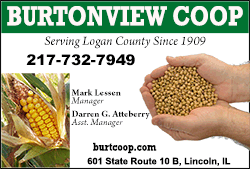
For more information about PAD, contact your local County USDA
Service Center or visit fsa.usda.gov.
USDA Launches First Phase of Soil Carbon
Monitoring Efforts through CRP
The U.S. Department of Agriculture (USDA) is
investing $10 million in a new initiative to sample, measure,
and monitor soil carbon on Conservation Reserve Program (CRP)
acres to better quantify the climate outcomes of the program.
CRP is an important tool in the Nation’s fight to reduce the
worst impacts of climate change facing our farmers, ranchers,
and foresters. This initiative will begin implementation in fall
2021 with three partners. Today’s announcement is part of a
broader, long-term soil carbon monitoring effort across
agricultural lands that supports USDA’s commitment to deliver
climate solutions to agricultural producers and rural America
through voluntary, incentive-based solutions.
These models include the Daily Century Model, or DayCent, which
simulates the movement of carbon and nitrogen through
agricultural systems and informs the National Greenhouse Gas
Inventory. Data will also be used to strengthen
the COMET-Farm and COMET-Planner tools, which enable producers
to evaluate potential carbon sequestration and greenhouse gas
emission reductions based on specific management scenarios.
USDA partners will conduct soil carbon sampling on three
categories of CRP practice types: perennial grass, trees, and
wetlands.
Perennial grasses: In consultation with USDA, Michigan
State University will sample and measure soil carbon and bulk
density of CRP grasslands (including native grass plantings,
rangelands, and pollinator habitat plantings) at an estimated
600 sites across the U.S. with a focus in the central states
during this five-year project. This information will be used to
model and compare the climate benefits of CRP. Partners include
the University of Wisconsin-Madison, the University of Arkansas
at Pine Bluff, Deveron, an agriculture technology company, and
Woods End Laboratories.
Trees: Mississippi State University will partner with
Alabama A&M University to collect above and below ground data at
162 sites across seven states documenting CRP-related benefits
to soil and atmospheric carbon levels. Information will help
further calibrate the DayCent model. This five-year project will
focus within the Mississippi Delta and Southeast states.
Wetlands: Ducks Unlimited and its partners will collect
data on carbon stocks in wetland soils as well as vegetation
carbon levels at 250 wetland sites across a 15-state area in the
central U.S. Data will support the DayCent and additional
modeling. Partners for this five-year project include: Migratory
Bird Joint Venture, Intertribal Research and Resource Center at
United Tribes Technical College, Clemson University, Kenyon
College, Lincoln University, Pennsylvania State University, the
University of Missouri, and the University of Texas at Austin.
CRP Monitoring, Assessment, and Evaluation Projects
These three Climate Change Mitigation Assessment Initiative
projects are funded through FSA’s program to work with partners
to identify Monitoring, Assessment and Evaluation (MAE) projects
to quantify CRP environmental benefits to water quality and
quantity, wildlife, and rural economies.
Applications for projects were welcome from all organizations,
including public, private, nonprofit institutions, and
educational institutions including historically Black colleges
and universities, Tribal colleges and universities and
Hispanic-serving institutions or organizations.
For more details on the all the awarded MAE projects, visit
the FSA Monitoring Assessment & Evaluation webpage.
[to top of second column] |

About the Conservation Reserve Program
CRP is one of the world’s largest voluntary conservation programs,
with an established track record of preserving topsoil, sequestering
carbon, reducing nitrogen runoff and providing healthy habitat for
wildlife.
In exchange for a yearly rental payment, agricultural producers
enrolled in the program agree to remove environmentally sensitive
land from production and plant species that will improve
environmental health and quality. In general, land is enrolled in
CRP for 10 to 15 years, with the option of re-enrollment. FSA offers
multiple CRP signups, including the general signup and continuous
signup, as well as Grassland CRP and pilot programs focused on soil
health and clean water. In 2021, producers and landowners enrolled
more than 5.3 million acres in CRP signups, surpassing USDA’s
4-million-acre goal.
Earlier this year, USDA announced updates to CRP including higher
payment rates, new incentives for environmental practices, and a
more targeted focus on the program’s role in climate change
mitigation. This included a new Climate-Smart Practice Incentive for
CRP general and continuous signups that aims to increase carbon
sequestration and reduce greenhouse gas emissions. Climate-Smart CRP
practices include establishment of trees and permanent grasses,
development of wildlife habitat, and wetland restoration. Download
the “What’s New” fact sheet to learn more about CRP updates.
FSA is Accepting CRP Continuous Enrollment
Offers
The Farm Service Agency (FSA) is accepting offers
for specific conservation practices under the Conservation Reserve
Program (CRP) Continuous Signup.
In exchange for a yearly rental payment, farmers enrolled in the
program agree to remove environmentally sensitive land from
agricultural production and to plant species that will improve
environmental health and quality. The program’s long-term goal is to
re-establish valuable land cover to improve water quality, prevent
soil erosion, and reduce loss of wildlife habitat. Contracts for
land enrolled in CRP are 10-15 years in length.

Under continuous CRP signup, environmentally sensitive land devoted
to certain conservation practices can be enrolled in CRP at any
time. Offers for continuous enrollment are not subject to
competitive bidding during specific periods. Instead, they are
automatically accepted provided the land and producer meet certain
eligibility requirements and the enrollment levels do not exceed the
statutory cap.
For more information, including a list of acceptable practices,
contact your local County USDA Service Center or visit fsa.usda.gov/crp.
USDA Microloans Help Farmers Purchase Farmland
and Improve Property
Farmers can use USDA farm ownership microloans to
buy and improve property. These microloans are especially helpful to
beginning or underserved farmers, U.S. veterans looking for a career
in farming, and those who have small and mid-sized farming
operations.
Microloans have helped farmers and ranchers with operating costs,
such as feed, fertilizer, tools, fencing, equipment, and living
expenses since 2013.
Microloans can also help with farmland and building purchases and
soil and water conservation improvements. FSA designed the expanded
program to simplify the application process, expand eligibility
requirements and expedite smaller real estate loans to help farmers
strengthen their operations. Microloans provide up to $50,000 to
qualified producers and can be issued to the applicant directly from
the USDA Farm Service Agency (FSA).
To learn more about the FSA microloan program, contact your local
County USDA Service Center or visit fsa.usda.gov/microloans.
Linkage Requirements for Payments Received Under
WHIP+ and/or QLA
If you received a payment under the Wildfires and
Hurricanes Indemnity Program+ (WHIP+) or the Quality Loss Adjustment
Program (QLA) for crop production and/or quality losses occurring in
2018, 2019, or 2020 crop years, you are required to meet linkage
requirements by obtaining federal crop insurance or Non-Insured Crop
Disaster Assistance Program (NAP) coverage at the 60/100 level, or
higher, for both the 2022 and 2023 crop years.
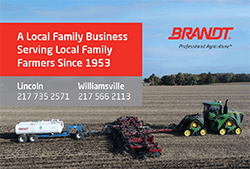
When applying for WHIP+ or QLA, form FSA-895 (Crop Insurance and/or
NAP Coverage Agreement) was submitted acknowledging the requirement
to obtain federal crop insurance, if available, or NAP coverage if
federal crop insurance is not available. The coverage requirement is
applicable to the physical location county of the crop that received
WHIP+ and/or QLA benefits.
Producers should not delay contacting their federal crop insurance
agent or local county FSA Office to inquire about coverage options,
as failure to obtain the applicable coverage by the
sales/application closing date will result in the required refund of
WHIP+ benefits received on the applicable crop, plus interest. You
can determine if crops are eligible for federal crop insurance or
NAP by visiting the RMA website.
For more information, contact your local County USDA Service Center
or visit fsa.usda.gov.
FSA Outlines MAL and LDP Policy
The 2018 Farm Bill extends loan authority through
2023 for Marketing Assistance Loans (MALs) and Loan Deficiency
Payments (LDPs).
MALs and LDPs provide financing and marketing assistance for wheat,
feed grains, soybeans, and other oilseeds, pulse crops, rice,
peanuts, cotton, wool and honey. MALs provide you with interim
financing after harvest to help you meet cash flow needs without
having to sell your commodities when market prices are typically at
harvest-time lows. A producer who is eligible to obtain a loan, but
agrees to forgo the loan, may obtain an LDP if such a payment is
available. Marketing loan provisions and LDPs are not available for
sugar and extra-long staple cotton.
FSA is now accepting requests for 2021 MALs and LDPs for all
eligible commodities after harvest. Requests for loans and LDPs
shall be made on or before the final availability date for the
respective commodities.
Commodity certificates are available to loan holders who have
outstanding nonrecourse loans for wheat, upland cotton, rice, feed
grains, pulse crops (dry peas, lentils, large and small chickpeas),
peanuts, wool, soybeans and designated minor oilseeds. These
certificates can be purchased at the posted county price (or
adjusted world price or national posted price) for the quantity of
commodity under loan, and must be immediately exchanged for the
collateral, satisfying the loan. MALs redeemed with commodity
certificates are not subject to Adjusted Gross Income provisions.
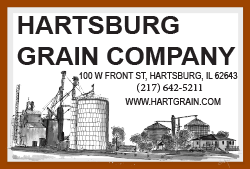
To be considered eligible for an LDP, you must have form CCC-633EZ,
Page 1 on file at your local FSA Office before losing beneficial
interest in the crop. Pages 2, 3 or 4 of the form must be submitted
when payment is requested.
Marketing loan gains (MLGs) and loan deficiency payments (LDPs) are
no longer subject to payment limitations, actively engaged in
farming and cash-rent tenant rules.
Adjusted Gross Income (AGI) provisions state that if your total
applicable three-year average AGI exceeds $900,000, then you’re not
eligible to receive an MLG or LDP. You must have a valid CCC-941 on
file to earn a market gain of LDP. The AGI does not apply to MALs
redeemed with commodity certificate exchange.
For more information and additional eligibility requirements,
contact your local County USDA Service Center or visit fsa.usda.gov.
Illinois Farmers: Consider Conservation
Easements
NRCS announced funding is now available for the
Agricultural Conservation Easement Program - Agricultural Land
Easements (ACEP-ALE). The ALE program can help address development
and population pressures that pose a threat to Illinois farmland
acres currently used for agricultural production. Through
conservation easements, NRCS provides financial assistance to
eligible partners or entities to assist landowners with the purchase
of Agricultural Land Easements (ALE). These easements help
farmers/landowners keep working croplands and grasslands in active,
profitable agriculture production. The ALE sign-up is continuous.
However, a funding cut-off date is established to allow eligible
applications to compete for funding. The first funding cutoff for
fiscal year (FY) 2022 is December 10, 2021. All eligible
applications on file with NRCS on December 10th will be considered
for funding.
Eligible entities include state and local governments and
non-governmental organizations that have farmland or grassland
protection programs. Dozier explains, “What is special about
agricultural easements is that they can protect the long-term
viability of our nation’s food supply, something that is more
important than ever before. Easements are a powerful way to actually
prevent conversion of productive working lands across Illinois to
non-agricultural uses and conserve vital grazing land and pastures,”
Dozier added. For FY 2022, NRCS has $423,000 available for funding.

Agricultural Land Easements can also help keep agriculture lands in
the hands of family members, while providing an enhanced opportunity
to keep productive land available for secure crop production.
Easements can also offer farming opportunities for new farmers to
agriculture. To date, producers and partners nationwide have
successfully protected more than 1.8 million acres of farmland and
grassland through ACEP’s predecessor programs – the Farm and Ranch
Lands Protection Program and the Grassland Reserve Program.
Interested entities can sign up for ALE at their local NRCS office
before the first funding cutoff of December 10, 2021. Interested
landowners need to find an entity who is willing to assist in the
purchase of the easement. If you do not know of an entity that would
work, contact your local NRCS office to get more information about
the type of entity that would hold an Agriculture Land Easement.
Applications received by December 10, 2021 will be ranked in January
and funding decisions will be made by NRCS after January 28, 2022.
Due to COVID-19 restrictions, producers should call to set up
appointments with local NRCS office staff. Visit www.nrcs.usda.gov
to learn more.
Unauthorized Disposition of Grain
If loan grain has been disposed of through feeding, selling or any
other form of disposal without prior written authorization from the
county office staff, it is considered unauthorized disposition. The
financial penalties for unauthorized dispositions are severe and a
producer’s name will be placed on a loan violation list for a
two-year period. Always call before you haul any grain under loan.
Environmental Review Required Before Project
Implementation
The National Environmental Policy Act (NEPA) requires Federal
agencies to consider all potential environmental impacts for
federally-funded projects before the project is approved.
For all Farm Service Agency (FSA) programs, an environmental review
must be completed before actions are approved, such as site
preparation or ground disturbance. These programs include, but are
not limited to, the Emergency Conservation Program (ECP), Farm
Storage Facility Loan (FSFL) program and farm loans. If project
implementation begins before FSA has completed an environmental
review, the request will be denied. Although there are exceptions
regarding the Stafford Act and emergencies, it’s important to wait
until you receive written approval of your project proposal before
starting any actions.

Applications cannot be approved until FSA has copies of all permits
and plans. Contact your local FSA office early in your planning
process to determine what level of environmental review is required
for your program application so that it can be completed timely.
Maintaining the Quality of Farm-Stored Loan
Grain
Bins are ideally designed to hold a level volume of grain. When bins
are overfilled and grain is heaped up, airflow is hindered and the
chance of spoilage increases.
Producers who take out marketing assistance loans and use the
farm-stored grain as collateral should remember that they are
responsible for maintaining the quality of the grain through the
term of the loan.
Transitioning Expiring CRP Land to Beginning,
Veteran or Underserved Farmers and Ranchers
CRP contract holders are encouraged to transition their Conservation
Reserve Program (CRP) acres to beginning, veteran or socially
disadvantaged farmers or ranchers through the Transition Incentives
Program (TIP). TIP provides annual rental payments to the landowner
or operator for up to two additional years after the CRP contract
expires.
CRP contract holders no longer need to be a retired or retiring
owner or operator to transition their land. TIP participants must
agree to sell, have a contract to sell, or agree to lease long term
(at least five years) land enrolled in an expiring CRP contract to a
beginning, veteran, or socially disadvantaged farmer or rancher who
is not a family member.
Beginning, veteran or social disadvantaged farmers and ranchers and
CRP participants may enroll in TIP beginning two years before the
expiration date of the CRP contract. The TIP application must be
submitted prior to completing the lease or sale of the affected
lands. New landowners or renters that return the land to production
must use sustainable grazing or farming methods.
For more information, contact your local County USDA Service Center
or visit fsa.usda.gov.

The Importance of Responding to NASS Surveys
USDA’s National Agricultural Statistics Service (NASS) conducts
hundreds of surveys every year and prepares reports covering
virtually every aspect of U.S. agriculture.
If you receive a survey questionnaire, please respond quickly and
online if possible.
The results of the surveys help determine the structure of USDA farm
programs, such as soil rental rates for the Conservation Reserve
Program and prices and yields used for the Agriculture Risk Coverage
and Price Loss Coverage programs. This county-level data is critical
for USDA farm payment determinations. Survey responses also help
associations, businesses and policymakers advocate for their
industry and help educate others on the importance of agriculture.
NASS safeguards the privacy of all respondents and publishes only
aggregate data, ensuring that no individual operation or producer
can be identified.
NASS data is available online at nass.usda.gov/Publications and
through the searchable Quick Stats database. Watch a video on how
NASS data is used at youtube.com/watch?v=m-4zjnh26io&feature=youtu.be.

[Farmers.Gov] |